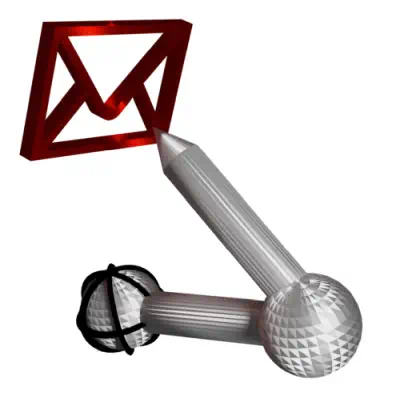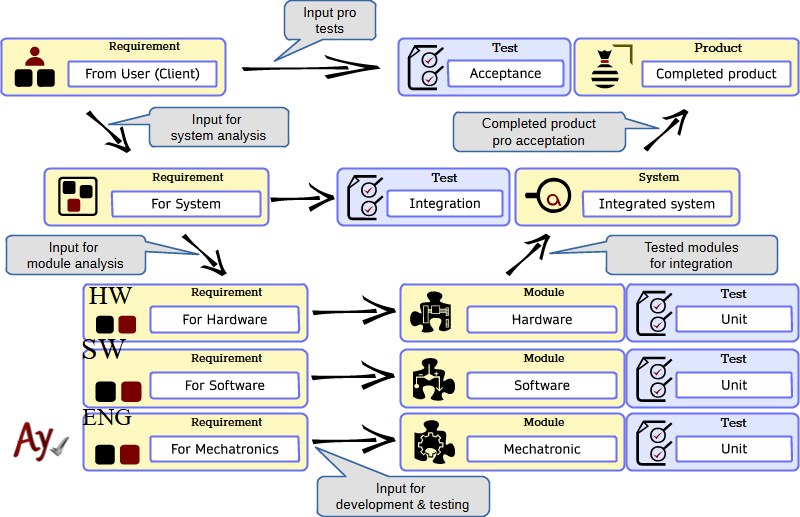AyMINE – Technical documentation
Modules
Integration with ERP Abra Gen
 Task, project & quality management
Task, project & quality management
Manager approval with the task report
Why some data can't be deleted
GDPR and record of qualifications
Qualification of user or contact
Right to Manage Qualifications
Adminitration of areas, projects, calendars
Failure Analysis for an Individual Property of a Component or Process
FMEA – Probability of Detection
FMEA – Probability of Occurrence
 Task, project & quality management
Task, project & quality management
Administration of the Task Management Module
System rights for the task management module
Improvements and Preventive Measures
Methodology and Quality Management systems
What makes up the methodology / SMJ
Problems, tickets and their management
Collaborative Resolution of Multiple Problems
Customer Service Response Generation
Incident and Quality Issue Management
Objects affected by the problem
Problems, Incidents, Helpdesk Tickets
Return project plan by baseline
Sample tasks and methodologies of the area
Effect of the task on the right to modify the attached object
The person responsible for the task
Working procedure – task definition
Management of responsibilities - RACI Matrix
Objects related to the task pattern
 Contacts and directories module (CRM)
Contacts and directories module (CRM)
Address book list and management
Directory or people and companies
Order overview for customer groups
 Contacts and directories module (CRM)
Contacts and directories module (CRM)
System Permissions and CRM Module Settings
Send bulk messages in compliance with GDPR
How to correctly forget a person's details
Unsubscribe and set preferences
for bulk mail
 Web management and automation
Web management and automation
Receiving a message from the web
Human resources
Personalistics – User Permissions and roles
Human Resources module security
Manage department / division data
Overview of Personnel Information for pracov# Employment Contract
Synchronizing staff and system users
 Products, assets and sales
Products, assets and sales
Creating and processing orders
Manage the Property & Business module
Why are the Quality criteria usefull
Managing Finance
Metrics and Measurements
Work summaries from generated data
Technical Modules
Sabre plugin module
Enterprise Architect connector
Database link to Enterprise Architect database
Enterprise Architect connector
System Modules
 The AyMINE Framework Module
The AyMINE Framework Module
AyMINE — Tips for Mobile Usage
Configure how your system looks and works
Gestures and Keyboard Shortcuts
More about how the system works
Private notes and tags for objects
Overview of Modules and Record Types
 Type of tests
Type of tests 
Test types distinguish the stages of product verification
- Test type by level
- Other types of tests
- Methodologies defining testing
- You ask or what you want to know about testing
- Where to go next
Test type by level
Unit tests
Unit tests are tests at the lowest level of development. They deal with basic units – functions, circuits, basic parts.
Basically, unit tests at the lowest level verify that the whole is built from reliable parts.
Unit tests should include all functions – user, system, and of course the operation of all interfaces.
Unit test documentation
With unit tests, how you perform them is critical. If unit tests are automated, they are of course documented due to their code.
If they are not automated, it is usual that they are performed by the developer immediately after the feature is developed (before commit to the repository). Writing down how the unit test was run would not make sense and would burden the work disproportionately. Remember, however, that if development is done in accordance with standards such as ASPICE, documentation of unit tests is also mandatory.
The basis for unit tests are detailed requirements for hardware, software, mechatronics.
How to document unit tests
There must be a methodology for the tests, what needs to be verified by the test. The tester confirms compliance.
Example of unit tests for software:
The standards require static code review. This includes
- Code review – documentation is the task performed that involved the code being reviewed
- Code analysis (manual or more or less automated) – the documentation is the output from the analysis tool or, again, confirmation from whoever performed the analysis
- Consistency check (e.g. checking that one function calls another for the correct purpose and with the correct parameters)
Example for hardware (electronics):
- Check all signal paths
- Analysis in design software by simulating current flows
- Verifying that the hardware is doing what it is supposed to do, e.g. loading software into memory, resetting software that is not responding ("watch dog"), etc.
Example for mechatronics:
- Stress test the strength of components
- Checking the resistance of moving parts (e.g. cables in bending)
Integration tests
The purpose of integration tests is to verify that separately developed and unit-level tested parts work together correctly.
Integration tests are typically multilevel for incremental integration.
Remember that integration takes place between all parts of the product under development – hardware, software, mechatronics.
The input for integration tests is the system requirements.
Acceptance/qualification testing
The goal of these levels of testing is to verify that the entire solution – product, software – behaves correctly in the environment for which it is intended.
The input for qualification/acceptance testing is the user requirements, constraints, regulations and standards that the solution must meet
Other types of tests
Tests are categorized not only by level but also by focus. In general, it is not possible to say at which level which types of tests are done, because they are often multi-level in the same way as functional tests.
The most common tests are mandatory tests
- Cybersecurity tests – verify that the product is resistant to external intrusion. Cybersecurity tests are performed at all levels of testing
- Security tests – checking that the product is secure. These are usually acceptance level tests. But they include, for example, tests of individual components for temperature resistance for the environment they will be in, which is realistically the lowest level of testing.
- Resistance Tests – Testing under various stresses to see if the product can withstand the stresses it is expected to withstand over its expected lifetime
- Stress Tests – Close to endurance tests, but focused on how much stress a product or part can withstand.
Methodologies defining testing
We did not invent the types of tests, they are precisely defined by many methodologies. The most readily available methodology is SPICE, or its automotive variant, ASPICE. There is also a lot of work on software development standard, ISO/IEC 12204.
You ask or what you want to know about testing
What types of tests do we need to do?
The types of tests are generally defined by the project methodology. If you have an established methodology in your company, you need to follow it.
The important thing is whether the product you are creating must meet the standards. For example, all software for cars, production machines or even instruments that are used in production must pass all types of tests. Standards such as ISO 26262, CMMI and others require this.
We do not have to comply with any standard, so we are not affected by the obligations
If the development is not driven by a mandatory standard, there is no external standard. However, for a good verification of the functioning of the software, at least
- Unit tests (testing of the programmer and solution designer) and
- Qualification tests (user/functional testing). Without these two levels, there are bound to be many flaws in the final solution
Where to go next
General about AyMINE tests here.
Training on testing
If you are unsure about testing, we recommend training on testing to learn everything.
Testing is the last step in quality
Quality standards look at testing as (almost) the last step, where the quality of the product is addressed. But quality starts at the definition of the brief, continues through design to development and testing.
The whole issue of quality is covered in this training, for example.
